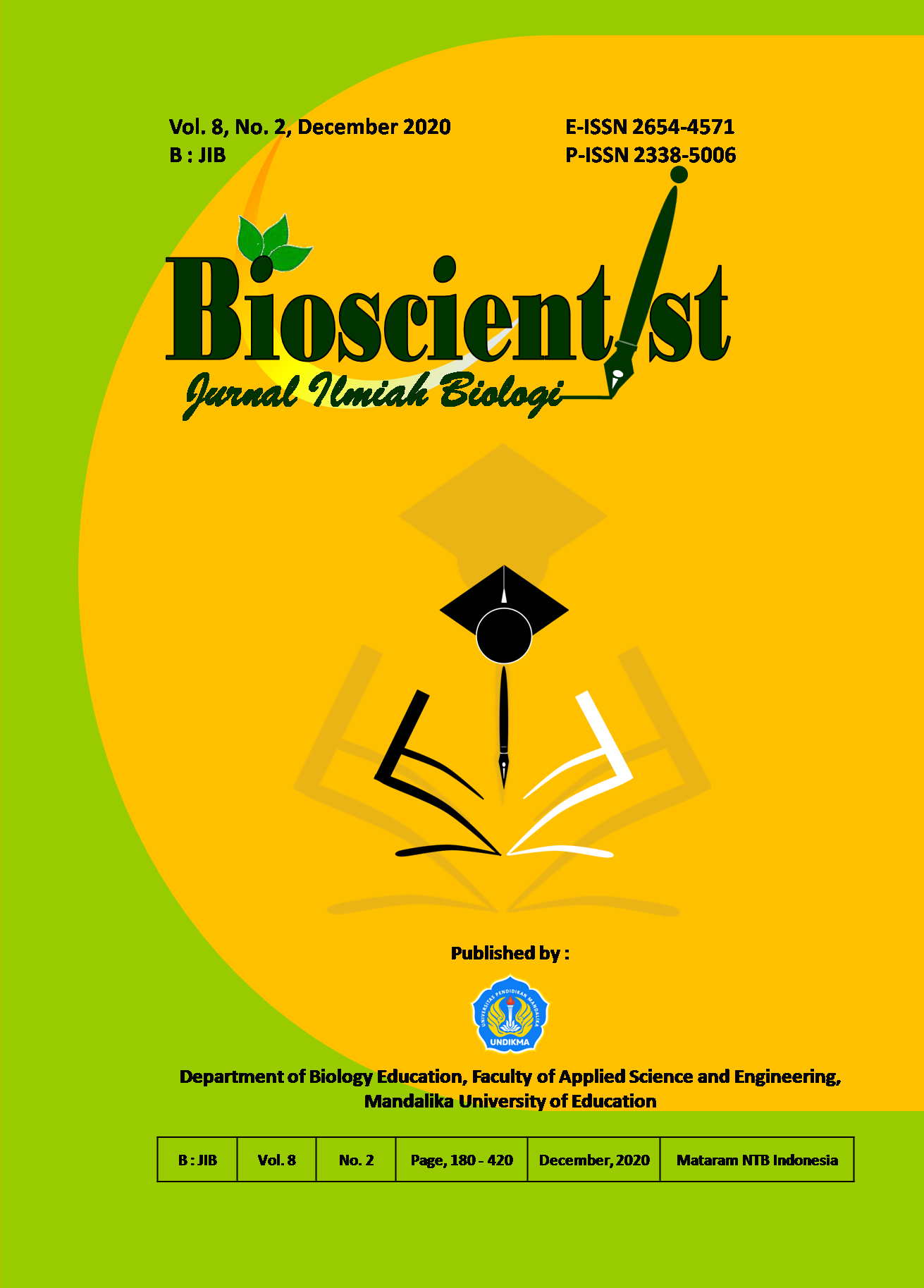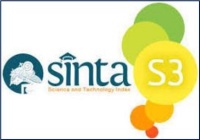Pengolahan Limbah Organik Pasar Menggunakan Reaktor Cacing Tanah (Lumbricus rubellus) dengan Metode Continuous Flow Bin
DOI:
https://doi.org/10.33394/bioscientist.v8i2.3239Keywords:
Earthworms, Continuous Flow Bin, Market Organic Waste, Processing.Abstract
References
Edwards, C. A., Arancon, N. Q., Sherman, R. L. (2011). Vermiculture Technology: Earthworm, Organik Wastes, and Environmental Management. Florida: CRC Press Taylor dan Francis Group.
Febrita, E., & Darmadi, S. E. (2015). Pertumbuhan Cacing Tanah (Lumbricus rubellus) dengan Pemberian Pakan Buatan untuk Mendukung Proses Pembelajaran pada Konsep Pertumbuhan dan Perkembangan Invertebrata. Jurnal Biogenesis, 11(2), 169-176.
Hanafiah, K. A. (2010). Rancangan Percobaan: Teori & Aplikasi (Edisi Ketiga) (p. 238). Palembang: Universitas Sriwijaya.
Kusuma, T. B. (2018). Studi Pengolahan Sampah Organik Pasar dengan Metode Continuous Flow Bin Vermicomposting dengan Parameter Uji C/N, P dan Kandungan K. Tugas Akhir. Universitas Islam Indonesia Yogyakarta.
Mashur. (2020a). Pemanfaatan Sampah Pasar sebagai Media Budidaya Cacing Tanah Eisenia fetida untuk Meningkatkan Kokon dan Biomassa. Geodika: Jurnal Kajian Ilmu dan Pendidikan Geografi, 4(1), 75-84.
______. (2020b). Produksi Kokon dan Biomassa Cacing Tanah Eisenia foetida pada Berbagai Media Budidaya Limbah Peternakan. Bioscientist: Jurnal Ilmiah Biologi, 8(1), 48-57.
______. (2020c). Pemanfaatan Sampah Organik Rumah Tangga sebagai Media Budidaya untuk Meningkatkan Produktivitas Cacing Tanah Eisenia foetida. Jurnal Sangkareang Mataram, 6(2), 6-12.
Mashur, Agustin, D. L. A., Ningtyas, I. S. N., Multazam, A., & Ningsih, M. (2020). Gelar Teknologi Pengolahan Kotoran Sapi dan Limbah Rumah Tangga Menjadi Eksmecat untuk Meningkatkan Pendapatan Masyarakat. Sasambo: Jurnal Abdimas (Journal of Community Service), 2(3), 86-94.
Najamuddin, A. (2019). Retrieved February 23, 2020, from Produksi Sampah di NTB Capai 3.388 Ton Setiap Hari. Interactwebsite: https://www.gatra.com/detail/news/412510/politic/produksi-sampah-di-ntb-capai-3388-ton-setiap-hari.
Simandjuntak, A. K., & Waluyo, D. (2012). Cacing Tanah: Budidaya dan Pemanfaatannya. Jakarta: PT. Penebar Swadaya.
Steel, R. G. D., & Torrie, J. H. (2010). Prinsip dan Prosedur Statistika. Jakarta: Gramedia.
Suharjo, B. (2010). SPSS 7.5 for Windows 8. Bogor: Laboratorium Komputasi, Jurusan Matematika, FMIPA, Institut Pertanian Bogor.
Yitnosumarto, S. (2013). Perancangan Percobaan, Analisis, dan Interpretasi. Yogyakarta: Gramedia Pustaka Utama.













